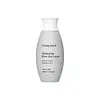What's inside
What's inside
 Key Ingredients
Key Ingredients

No key ingredients
 Benefits
Benefits

 Concerns
Concerns

 Ingredients Side-by-side
Ingredients Side-by-side

Water
Skin ConditioningPolyalkylaminoester-1
Hydrolyzed Corn Starch
HumectantPvp
Emulsion StabilisingPolyacrylate-13
Sodium Citrate
BufferingPhospholipids
Skin ConditioningPentylene Glycol
Skin ConditioningPropylene Glycol Dibenzoate
Skin ConditioningFructose
HumectantSodium Hyaluronate
HumectantGlycerin
HumectantMaltodextrin/Vp Copolymer
Myristyl Alcohol
EmollientPolyporus Umbellatus Extract
Skin ProtectingAmaranthus Caudatus Seed Extract
Skin ConditioningPolysorbate 20
EmulsifyingXanthan Gum
EmulsifyingPolyisobutene
PPG-2 Myristyl Ether Propionate
EmollientOleth-10
EmulsifyingParfum
MaskingHydroxyacetophenone
AntioxidantEthylhexylglycerin
Skin ConditioningLinalool
PerfumingCitronellol
PerfumingLimonene
PerfumingCitral
PerfumingWater, Polyalkylaminoester-1, Hydrolyzed Corn Starch, Pvp, Polyacrylate-13, Sodium Citrate, Phospholipids, Pentylene Glycol, Propylene Glycol Dibenzoate, Fructose, Sodium Hyaluronate, Glycerin, Maltodextrin/Vp Copolymer, Myristyl Alcohol, Polyporus Umbellatus Extract, Amaranthus Caudatus Seed Extract, Polysorbate 20, Xanthan Gum, Polyisobutene, PPG-2 Myristyl Ether Propionate, Oleth-10, Parfum, Hydroxyacetophenone, Ethylhexylglycerin, Linalool, Citronellol, Limonene, Citral
Water
Skin ConditioningCocamidopropyl Betaine
CleansingVp/Dmapa Acrylates Copolymer
Acrylates Copolymer
Polyimide-1
Polysorbate 20
EmulsifyingPanthenol
Skin ConditioningPolyquaternium-70
Dipropylene Glycol
HumectantStearalkonium Chloride
PreservativePEG-12 Dimethicone
Skin ConditioningPhenoxyethanol
PreservativeEthylhexylglycerin
Skin ConditioningSynthetic Fluorphlogopite
Titanium Dioxide
Cosmetic ColorantCI 17200
Cosmetic ColorantLinalool
PerfumingHexyl Cinnamal
PerfumingCitral
PerfumingLimonene
PerfumingCoumarin
PerfumingBenzyl Salicylate
PerfumingAlpha-Isomethyl Ionone
PerfumingWater, Cocamidopropyl Betaine, Vp/Dmapa Acrylates Copolymer, Acrylates Copolymer, Polyimide-1, Polysorbate 20, Panthenol, Polyquaternium-70, Dipropylene Glycol, Stearalkonium Chloride, PEG-12 Dimethicone, Phenoxyethanol, Ethylhexylglycerin, Synthetic Fluorphlogopite, Titanium Dioxide, CI 17200, Linalool, Hexyl Cinnamal, Citral, Limonene, Coumarin, Benzyl Salicylate, Alpha-Isomethyl Ionone
Ingredients Explained
These ingredients are found in both products.
Ingredients higher up in an ingredient list are typically present in a larger amount.
Citral is a fragrance and used to add a lemon-like scent to products. It is both naturally found in plants and created synthetically. In plants, it is commonly occurring in lemon myrtle, lemongrass, lemon tea-tree, lemon verbena, and other citruses.
The EU mandates Citral be listed separately as a fragrance. It is a known allergen and may cause contact dermatitis. Citral can also used as a masking ingredient.
The term 'fragrance' is not regulated in many countries. In many cases, it is up to the brand to define this term. For instance, many brands choose to label themselves as "fragrance-free" because they are not using synthetic fragrances. However, their products may still contain ingredients such as essential oils that are considered a fragrance.
The term 'citral' is a collective term for two geometric isomers: geranial/Citral A and neral/Citral B.
Learn more about CitralEthylhexylglycerin (we can't pronounce this either) is commonly used as a preservative and skin softener. It is derived from glyceryl.
You might see Ethylhexylglycerin often paired with other preservatives such as phenoxyethanol. Ethylhexylglycerin has been found to increase the effectiveness of these other preservatives.
Limonene is a fragrance that adds scent and taste to a formulation.
It's found in the peel oil of citrus fruits and other plants such as lavender and eucalyptus. The scent of limonene is generally described as "sweet citrus".
Limonene acts as an antioxidant, meaning it helps neutralize free radicals.
When exposed to air, oxidized limonene may sensitize the skin. Because of this, limonene is often avoided by people with sensitive skin.
The term 'fragrance' is not regulated in many countries. In many cases, it is up to the brand to define this term. For instance, many brands choose to label themselves as "fragrance-free" because they are not using synthetic fragrances. However, their products may still contain ingredients such as essential oils that are considered a fragrance.
Learn more about LimoneneLinalool is a fragrance and helps add scent to products. It's derived from common plants such as cinnamon, mint, citrus, and lavender.
Like Limonene, this ingredient oxidizes when exposed to air. Oxidized linalool can cause allergies and skin sensitivity.
This ingredient has a scent that is floral, spicy tropical, and citrus-like.
Learn more about LinaloolPolysorbate 20 is made by combining ethoxylation of sorbitan, ethylene oxide, and lauric acid. It is a mild cleansing agent, surfactant, and emulsifier.
As a surfactant, it helps collect dirt and oils for washing. Emulsifiers prevent oils and water from separating.
Polysorbate 20 also adds scent to a product. Since it is made using sorbitol, it has a sweet scent. Sorbitol can also be found in fruits such as apples and peaches.
The lauric acid used to create Polysorbate 20 is often derived from coconuts.
Polysorbate 20 may not be fungal acne safe.
Learn more about Polysorbate 20Water. It's the most common cosmetic ingredient of all. You'll usually see it at the top of ingredient lists, meaning that it makes up the largest part of the product.
So why is it so popular? Water most often acts as a solvent - this means that it helps dissolve other ingredients into the formulation.
You'll also recognize water as that liquid we all need to stay alive. If you see this, drink a glass of water. Stay hydrated!
Learn more about Water